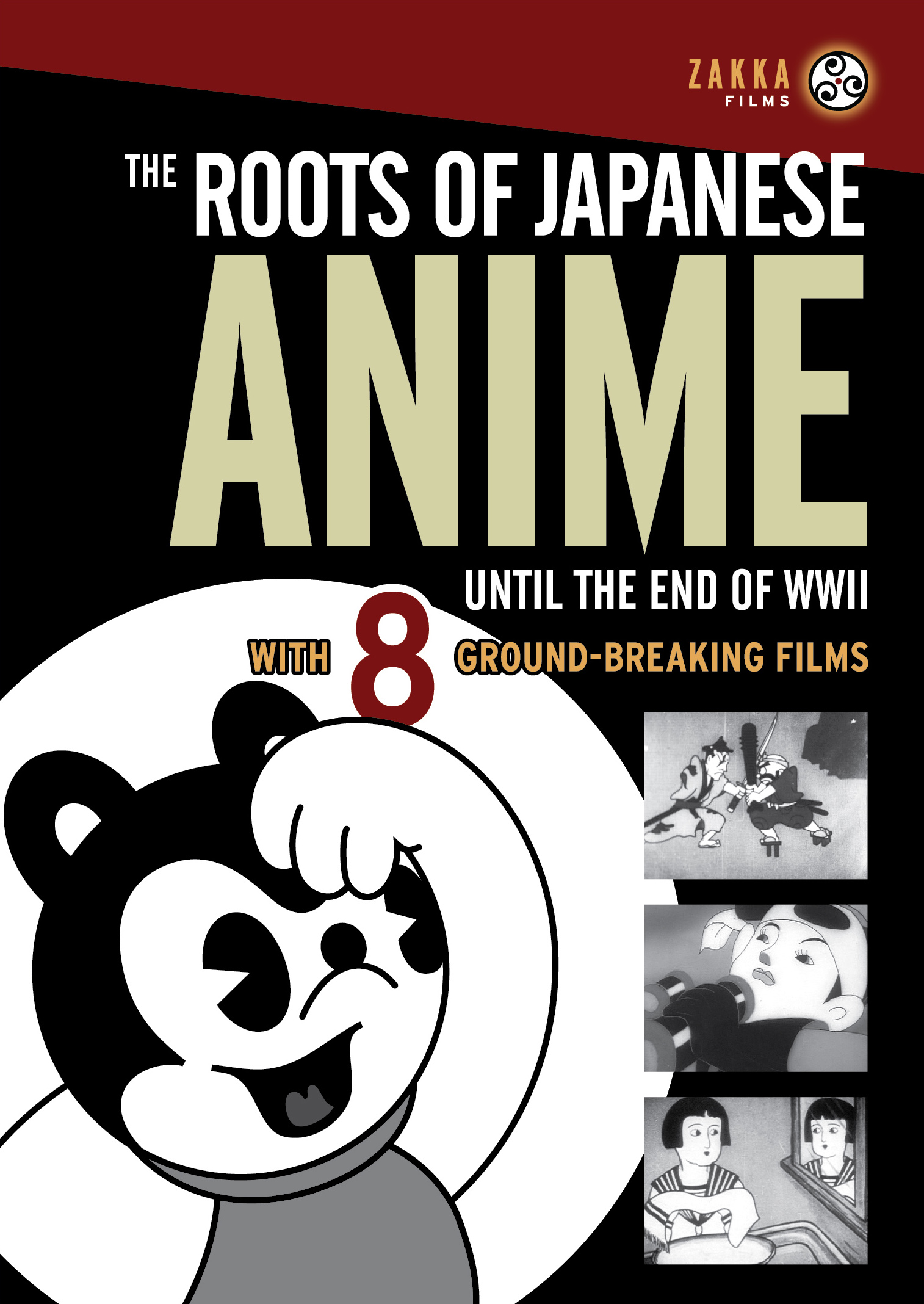The Roots of Japanese Anime—Until the End of WW II
Zakka Films Presents
The Roots of Japanese Anime—Until the End of WW II
Description
SOLD OUT. Thank you for your support!
A rare glimpse of early Japanese sound anime and prewar Japanese culture, The Roots of Japanese Anime features the masterworks of such pioneers of Japanese animation as Noburo Ofuji, Yasuji Murata, and Kenzo Masaoka, in addition to Mitsuyo Seo’s Momotaro’s Sea Eagle, the notorious war cartoon billed as Japan’s first feature anime. These movies represent the brilliance and variety of anime, ranging from beautiful Japanese paper animation to powerful multiplane cel cartoons. They also evoke the fascinating complexity of Japan, a nation that is then both marching towards war, enlisting kids in militarist nationalism, yet also delighting in a mixture of modern popular culture, ancient folk tales, irreverent comedy, and the everyday life of prewar Japanese children.
Contents:
The Village Festival
Noburo Ofuji / 1930/ 3 min.
One of the Japan’s greatest animators, Noburo Ofuji (1900-1961) used traditional Edo chiyogami paper to give a cut-out animation version of Japanese village life. Includes the educational song that was played via phonograph during film screenings.
Song of Spring
Noburo Ofuji / 1931 / 4 min.
Another sing-a-long Edo chiyogami paper film by Noburo Ofuji. The song, sung by an artist active in Asakusa Opera, offers a delightful glimpse of 1930s pop music culture and a celebration of the seasons. Song of Spring is presented in a tinted print.
Chinkoroheibei and the Treasure Box
Noburo Ofuji / 1936 / 9 min.
Noburo Ofuji, whose name now dons Japan’s most prestigious award in animation, used not cut paper but cel animation to tell this humorous tale of a mischievous pup who tries to steal the treasure of an undersea king.
The Monkey Masamune
Yasuji Murata / 1930 / 8 min.
Yasuji Murata (1896-1966) was a pioneer in educational animation films, but is most remembered as a master of cutout animation. Many Japanese folk tales tell of a human being saving an animal and receiving a reward in return. The Monkey Masamune is one such story.
Chameko’s Day
Kiyoji Nishikura / 1931 / 7 min.
Based on a hit song by the child star Hideko Hirai from 1929, this gem provides glimpses of 1930s popular culture through introducing the typical life of a bright, energetic young girl.
Danemon Ban—The Monster Exterminator
Yoshitaro Kataoka / 1935 / 10 min.
Danemon Ban, an actual historical figure famous for his strength and leadership—and for his drinking—comically takes on raccoons posing as movie samurai. An anime strongly influenced by contemporary manga.
Benkei and Ushiwaka
Kenzo Masaoka /1939 / 14 min.
Kenzo Masaoka (1898-1988) is celebrated for helping introduce sound and cel animation to anime. In this enchanting work, the warrior priest Benkei and Ushiwaka (Yoshitsune Minamoto, 1159-1189), two of the most celebrated heroes in Japanese history, duel it out on Gojo Bridge.
Momotaro’s Sea Eagle
Mitsuyo Seo / 1942 / 37 min.
One of early anime’s most notorious and historically important works, directed by Mitsuyo Seo, Japan’s first master of feature animation. The legendary “Peach Boy” Momotaro leads his animal vassals to bomb Pearl Harbor—and Popeye’s Bluto as the representative American demon—in a work that reveals both the brilliant manipulation of anime technique (particularly the multiplanar camera), as well as the uses of animation for wartime propaganda for children.
BONUS FEATURES
The Roots of Japanese Anime Booklet
Momotaro’s Sea Eagle’s ad collection

This special DVD includes:
- The Village Festival Noburo Ofuji / 1930/ 3 min.
- Song of Spring Noburo Ofuji / 1931 / 4 min.
- Chinkoroheibei and the Treasure Box Noburo Ofuji / 1936 / 9 min.
- The Monkey Masamune Yasuji Murata / 1930 / 8 min.
- Chameko’s Day Kiyoji Nishikura / 1931 / 7 min.
- Danemon Ban—The Monster Exterminator Yoshitaro Kataoka / 1935 / 10 min.
- Benkei and Ushiwaka Kenzo Masaoka /1939 / 14 min.
- Momotaro’s Sea Eagle Mitsuyo Seo / 1942 / 37 min.
- Bonus Features:
- The Roots of Japanese Anime Booklet
- Japanese anime history and commentary for each film by prominent scholars.
- Momotaro’s Sea Eagle’s ad collection
